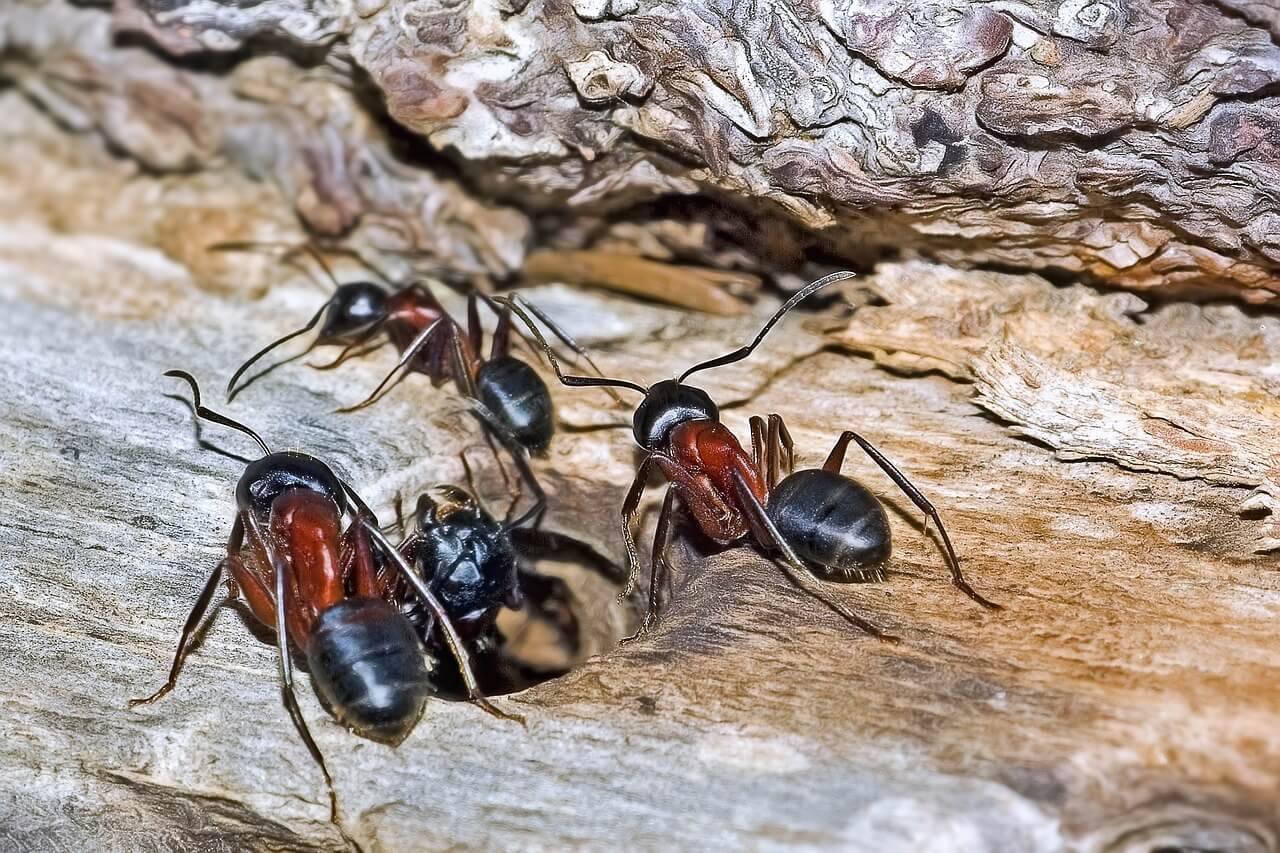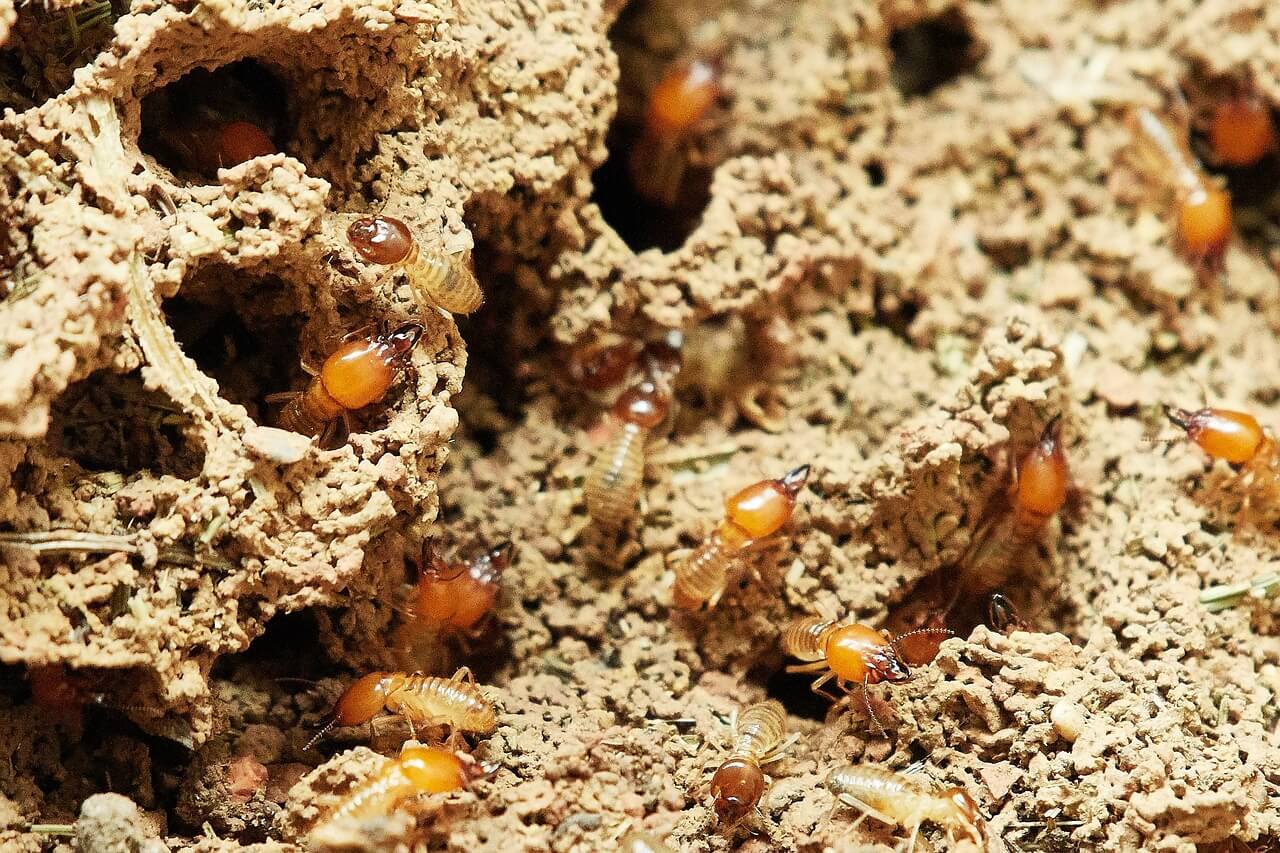Residents and property owners in the Pacific Northwest have a few wood-destroying organisms to deal with – carpenter ants, wood-infesting beetles, rot fungus, and of course… termites. While we don’t have as much termite damage in Oregon and Washington as found in the southern states, termite damage to homes and other properties is a real threat! Let’s talk about the types of termites found in the Pacific Northwest, termite prevention tips, and why you should enlist the help of professionals to protect your home from termite damage.
Types of Termites in the Pacific Northwest
1. Subterranean termites
Subterranean termites are a group of termites that can live in underground colonies or in moist secluded areas above ground that can contain up to 2 million member colonies. Here in Oregon, they are most common east of the Cascade Mountains, and they can cause significant structural damage.
Subterranean termite colonies are organized into castes depending on tasks — workers, soldiers, and reproductives. They are unique in that they build “mud tubes” to gain access to food sources and to protect themselves from open air. Here is how you can identify a subterranean termite:
- Size: ⅛ – ⅜” (workers and soldiers), 1” (swarmers)
- Color: Pale white hue (workers), pale white hue with a brown head (soldiers), dark brown or black with white/clear wings (swarmers)
- Body: Elongated oval body with six legs and antennae (workers and soldiers), swarmers have similar bodies to workers but with wings, soldiers have larger heads than workers
Subterranean termites like to feast on cellulose materials which are found in structural wood, paper, cotton, and books. Most species of subterranean termites swarm during the spring and summer months, typically on a warm day with calm winds after rainfall. Remember that subterranean termites cause 75% of home damage. If you spot mud tubes around your foundation or swarmers are spotted near your home, contact a pest control professional immediately. A trained professional can locate the colony and tunnels and then administer proper termite treatment.
2. Western drywood termites
Drywood termites are a group of termites that build their nests within moisture-free wood. These types of termites will occasionally infest homes along the coast of Oregon. Here is how you can identify a dampwood termite:
- Size: ¼” (soldiers), ½” (reproductives)
- Color: Pale brown with dark brown heads (soldiers), pale white (nymphs)
- Body: All have elongated oval bodies without segments, making them different in appearance from ants
- Wings: Four equally sized wings (swarmers), wingless (nymphs)
Drywood termites in the Pacific Northwest typically swarm during the late summer or fall, from August through November. Overall, these types of termites are commonly active in the spring, summer, and fall. Drywood termites are nocturnal, so spotting one in the daytime is unlikely. Keep an eye out for signs of a subterranean termite infestation including:
- Discarded wings of swarmers
- Piles of sawdust or wood shavings
- Frass–pellet-sized droppings that take on the color of the wood the termites have digested
For drywood termites, cellulose material – from structural timbers to books and carpet – are on the menu. They like to build their nests within moisture-free wood. Their small colonies occur in isolated wood pieces, and multiple colonies can infest a structure simultaneously. They often remain hidden within the wood or other material on which they feed, which is why regular termite inspections in the Kelso, Olympia, Portland, and Vancouver areas are so important.
3. Dampwood termites
The Pacific dampwood termite is the largest termite species found in the Pacific Northwest. These pests are notorious for consuming and nesting inside wood with high moisture content. Here is how you can identify a dampwood termite:
- Size: ¾ to 1″
- Appearance: Larger termites, light brown to reddish-brown in color with six legs
- Antennas: Yes
- Wings: Swarmers have wings
Dampwood termites in the Pacific Northwest swarm just before dusk from August to October. Correct pest identification makes pest control easier and more effective. But if you don’t want to get too close, a local pest management company can correctly identify the pest and come up with a plan to get rid of pests in your home or property.
Dampwood termites feed on wood which means that these pests can cause significant damage to homes and buildings in the Portland, OR and Vancouver, WA areas. Dampwood termites have an appetite for wet, weakened, or rotting wood. They prefer to infest structures with high moisture or fungus from plumbing leaks, drainage problems, or ventilation issues. Unlike other termites, they build nests in wet or decaying wood and live entirely within the wood that they feed on, rather than constructing mud tubes. Keep an eye out for dampwood termites, especially if you have a plumbing problem or leak somewhere on your property.
Termites vs Carpenter Ants
In the Pacific Northwest, people often confuse carpenter ants and termites. They’re both wood-destroying pests, and they’re active swarmers at the same time each year. But in fact, carpenter ants and termites are very different for different reasons:
- Appearance: Carpenter ants are larger than termites, their antennae are bent versus straight, their waists are narrower and defined versus broad, and their front wings are bigger than their hind ones vs equal in size like termites.
- Behavior: Termites eat the wood in which they nest while carpenter ants dig into wood to make their nests.
- Visibility: Carpenter ants are sometimes visible in the home, whereas termites are usually only visible when swarming.
Either way, an infestation of carpenter ants or termites can damage your home or business. And don’t worry, a trained pest control professional will know the difference.
Termite Prevention Tips
Your home, business, or commercial properties are your investment, and it is important to protect your investment. Keep these termite prevention tips in mind:
- Store firewood at least 20 feet from your home.
- Routinely inspect the foundation of a home for signs of a termite infestation including mud tubes, uneven or bubbling paint in your home, or wood that sounds hollow when tapped.
- Make sure to reduce or eliminate or reduce moisture in and around the home.
- Inspect all exterior areas of wood, including doorframes, skirting boards, and windows.
- Keep up with repairs around your home including leaking faucets, water pipes, and exterior AC units plus fascia, soffits, and rotted roof shingles.
- Schedule a certified structural pest inspector annually. (Interstate Pest Management offers this service for residential and commercial properties in the Kelso, Portland, Vancouver, and Olympia areas.)
Professional Termite Control and Removal Services In Portland And Vancouver
Complete termite protection for homeowners and property owners in the Pacific Northwest involves a combination of the initial inspection, termite treatment, establishing termite control barriers, and ongoing termite monitoring to ensure that termites haven’t found a way around the termite barrier treatment. Interstate Management can partner with you to help keep your home safe from termites. We’ve been doing it since 1963. Get in touch with us here or call us at (503)-832-4997.

